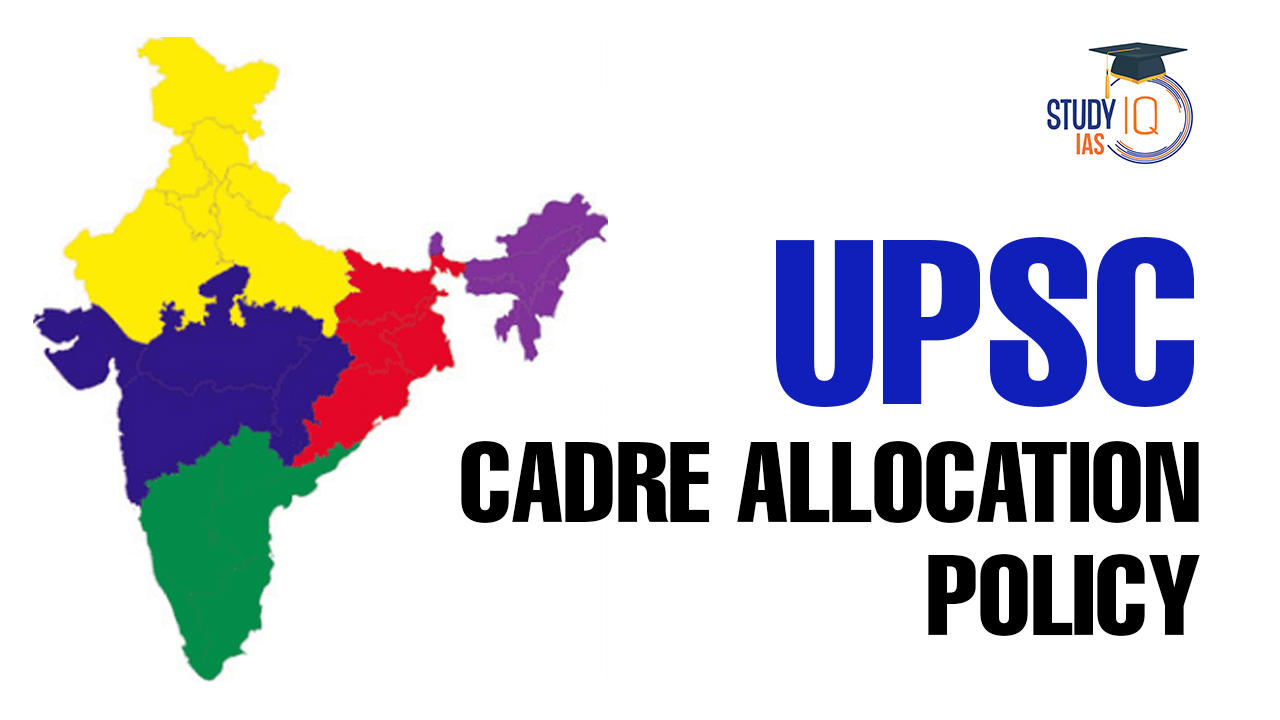Table of Contents
UPSC Cadre Allocation Policy
UPSC Cadre Allocation Policy: An officer of an All-India Service, like as IAS or IPS, may be posted to a state (or group of states or union territories), which is referred to as a “cadre.” AGMUT cadre, UP, Bihar, Kerala cadre are a few examples. The present UPSC Cadre distribution Policy differs dramatically from the previous cadre distribution policy in terms of how UPSC cadres are categorised, how IAS applicants indicate their preferred cadre for the IAS exam, and how insider and outsider vacancies are filled.
UPSC Cadre Allocation Process 2023
According to the revised Cadre Allocation Policy, 2017, the existing 26 cadres of the Indian Administrative Service (IAS), Indian Police Service (IPS), and Indian Forest Service (IFoS), have been grouped into five zones. The Zones are:
- Zone-I (AGMUT, Jammu and Kashmir, Himachal Pradesh, Uttarakhand, Punjab, Rajasthan and Haryana)
- Zone-II (Uttar Pradesh, Bihar, Jharkhand and Odisha)
- Zone-III (Gujarat, Maharashtra, Madhya Pradesh and Chhattisgarh)
- Zone-IV (West Bengal, Sikkim, Assam-Meghalaya, Manipur, Tripura and
- Zone-V (Telangana. Andhra Pradesh, Karnataka, Tamil Nadu and Kerala)
Candidates are only permitted to make one cadre from a zone their first choice under the new policy. They must choose from a different zone for their second, third, fourth, and fifth options. For instance, if a candidate’s first option is Uttar Pradesh (Zone 2), he cannot choose Bihar, Jharkhand, or Odisha (other cadres in Zone 2) as his second choice.
UPSC Cadre Allocation for IAS and IPS
The Cadre allocation policy for IAS and IPS have been mentioned below:
- The candidates will initially list their top three choices from each Zone in descending order of preference.
- The candidates will next choose one cadre choice from each chosen zone.
- Following that, the candidates will state their second rank preference for each desired zone.
- Similar steps will be taken until the candidate expresses a preference for each cadre.
- It should be emphasised that the sequence of choice for the zones will not change, and that the zones and cadres will continue to be preferred in the same order.
- It shall be assumed that a candidate has no preference for any of the Zones or Cadres if he expresses no preference at all.
- A candidate from a reserved category who is chosen based on general merit standards may be matched with an open unreserved position based on merit and preference. He will, however, be given consideration for allocation based on his merit and preference against the open vacancy in his category if he is not eligible for such a position because of his lower rank in comparison to other general category candidates.
- With the 2017 Civil Services Examination and 2017 Indian Forest Service Examination, this cadre allocation policy will replace the previous cadre allocation policy.
How to Choose Cadre
The preference procedure operates in the manner described below:
- One must choose their preferred zone.
- The following step is to select your preferred cadre.
- Additionally, the procedure must be done for each Zone.
- Cadre according to preference. Additionally, one can only select one cadre at a time.
- Candidates who fail to indicate their preferred cadre will be deemed to have no preference, and the authorities will be free to assign both positions in accordance with that assumption.
- Candidates for the quota who are physically impaired have an additional choice of preferences.
As a last point, it is significant to remember that the cadre allocation for public officials occurs at LBSNAA prior to the foundation course.
Home Cadre Allocation
An IAS officer’s home state is their home cadre. The ratio of outsiders to insiders among IAS officers in each Indian State is maintained at 2:1 by the Indian Government. As a result, an IAS official is only seldom assigned to his or her native State.
Candidates typically never receive their home State. Fewer situations exist where an officer can change his cadre. According to the new UPSC Cadre Allocation Policy, 2017, candidates for the IAS, IPS, or IFoS Services may select any cadre from the five UPSC cadre zones in accordance with their preferences.





















 WhatsApp
WhatsApp